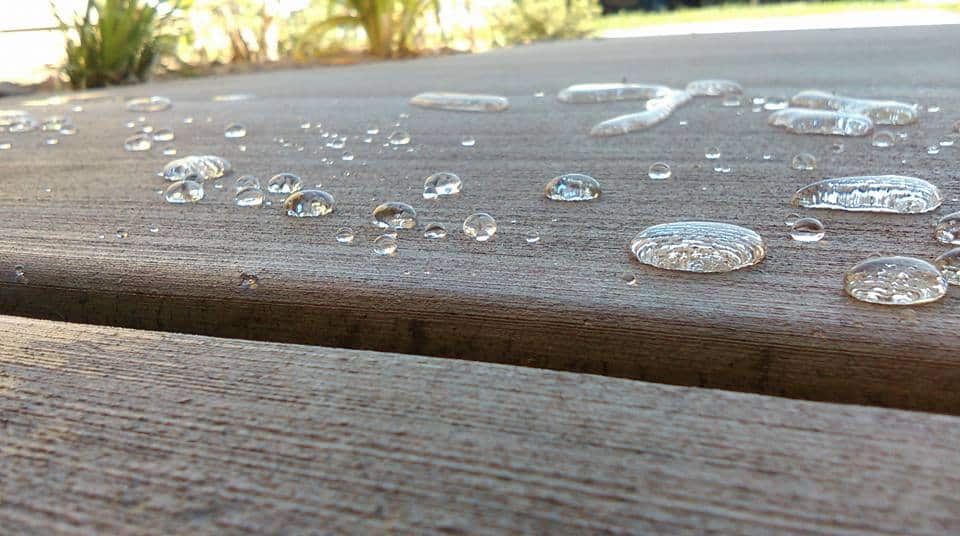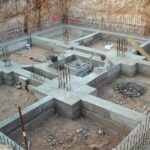There are 5 basic types of cement specified by the American Society for Testing and Materials (ASTM). These basic types of cement are further made into other different types by adding various ingredients and changing the proportions of ingredients to enhance the properties of cement and produce different types of cement for various uses.
The five basic types of cement recognized by ASTM are:
- Type 1 – Ordinary Portland cement (OPC), which is used for general concrete construction.
- Type 2 – Moderate sulfate resistance cement – used in structures that will come into contact with sulfate in water or soil.
- Type 3 – Extra rapid hardening cement – used for faster hardening and strength gain in structures.
- Type 4 – Low heat cement that releases less heat of hydration during the setting and drying period and it is used for applications where too much heat is undesirable.
- Type 5 – High sulfate-resistant cement, used for construction in highly alkaline soil and water.
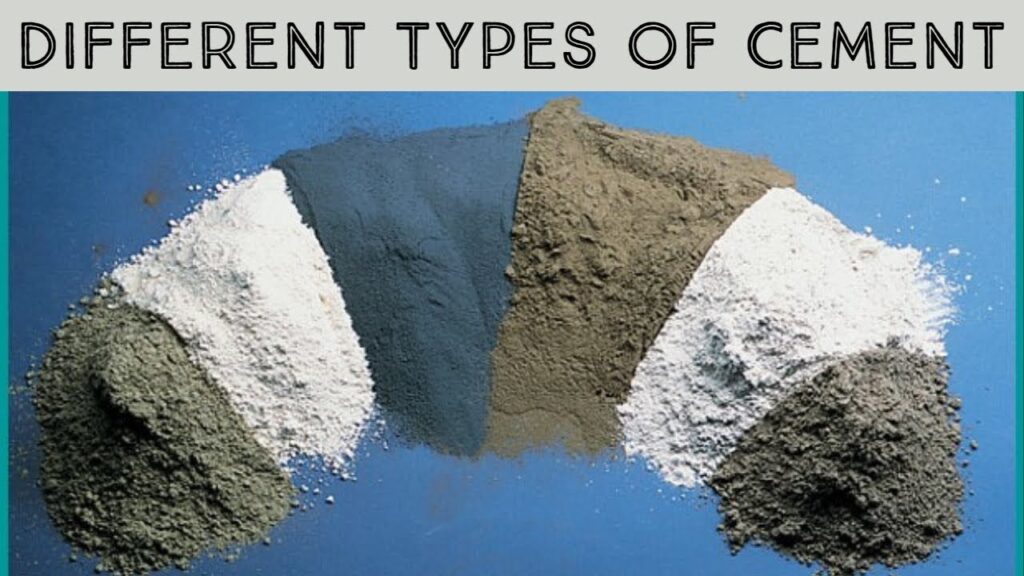
12 Types of Cement Used in Construction
The most commonly used types of cement are:
- Ordinary Portland Cement (OPC)
- Portland Pozzolana Cement (PPC)
- Sulfate resistant cement
- Low Heat Cement
- Rapid Hardening Cement
- Fast setting cement
- High alumina cement
- Blast Furnace Slag Cement
- Air Entraining Cement
- White Cement
- Expansive cement
- Hydrophobic cement
1. Ordinary Portland Cement (OPC)
Ordinary Portland cement is the most common and widely used type of cement suitable for all types of general concrete construction. Ordinary Portland Cement is generally available in three different grades, namely 33, 43, and 53 grade, which indicates the fineness and strength of the cement.
This cement is suitable for all kinds of concrete construction. Besides this, Ordinary Portland cement is also used to manufacture grout, wall putty, solid concrete blocks, AAC blocks, and other different types of cement by adding ingredients and different proportions of these ingredients.
Benefits of Ordinary Portland Cement
- OPC has a high compressive strength, which makes it suitable for use in a wide range of construction applications.
- It is readily available and affordable, making it a cost-effective choice for most construction projects.
- OPC is easy to work with and can be mixed with a variety of aggregates to produce concrete with different properties.
- It has a long shelf life, making it easy to store and transport.
Disadvantages of OPC
- OPC has a high carbon footprint due to the energy-intensive production process, which involves heating the raw materials to very high temperatures.
- It can be prone to cracking and shrinkage, particularly in hot and dry environments.
- OPC can be susceptible to chemical attack from substances such as sulphates, which can cause it to degrade over time.
Applications of Ordinary Portland Cement
- OPC is used in a wide range of construction applications, including building foundations, walls, and floors, as well as bridges, dams, and highways.
- It is also used in the production of precast concrete products such as pipes, beams, and columns.
- OPC is commonly used in the production of concrete blocks, which are widely used in the construction of low-rise buildings.
Examples of construction projects that use Ordinary Portland Cement
- The Burj Khalifa in Dubai, the tallest building in the world, was constructed using OPC concrete.
- The Hoover Dam in the United States, one of the largest concrete structures in the world, was built using OPC concrete.
- The Panama Canal Expansion project, which involved the construction of new locks to accommodate larger ships, used over 5 million cubic meters of OPC concrete.

2. Portland Pozzolana Cement (PPC)
Portland pozzolana cement (PPC) is produced by blending Portland cement clinker with pozzolanic materials such as fly ash, volcanic ash, or silica fumes. PPC is also produced by adding pozzolana with the addition of gypsum or calcium sulfate or by intimately and uniformly blending Portland cement and fine pozzolana.
The pozzolanic materials react with the calcium hydroxide in the cement to form additional cementitious compounds, which enhances the strength and durability of the concrete.
Portland Pozzolana Cement is highly resistant to various chemical attacks on concrete compared with ordinary portland cement. Thus, it is widely used for general construction as well. This concrete with this cement requires less curing than OPC.
PPC cement is used in marine structures, sewage works, sewage works, and for laying concrete underwater, such as bridges, piers, dams, mass concrete works, etc.

Benefits of PPC
- PPC has a lower carbon footprint than OPC, as it requires less energy to produce and reduces the amount of cement clinker needed.
- It has better resistance to sulphate and chloride attack, making it suitable for use in marine and coastal construction.
- PPC has better workability and can produce a more cohesive mix than OPC, making it easier to handle and place.
- It can improve the long-term durability and strength of concrete, particularly in harsh environments.
Disadvantages of PPC
- The use of pozzolanic materials can affect the setting time and early strength development of the cement, which can impact construction schedules.
- PPC can be more expensive than OPC due to the additional processing required to produce the pozzolanic materials.
Applications of PPC
- PPC is suitable for use in a wide range of construction applications, including bridges, dams, buildings, and roads.
- It is particularly useful in marine and coastal construction, where it is exposed to harsh environments and the risk of corrosion is high.
- PPC can also be used in the production of precast concrete products such as pipes, tiles, and blocks.
Examples of construction projects that use PPC
- The Bandra-Worli Sea Link in Mumbai, India, one of the longest sea bridges in the world, was constructed using PPC concrete.
- The Mahatma Gandhi Setu, a road bridge over the Ganges River in India, was constructed using PPC concrete.
- The Yamuna Expressway, a 165 km long highway connecting Delhi to Agra in India, was constructed using PPC concrete.
3. Sulfate Resistant Cement (SRC)
Sulfate-resistant cement is used where the soil has high levels of Sulphate/alkali contents for the construction of sewage systems, piers, foundations, and platforms, in the coastal areas to reduce the risk of sulfate attack on concrete. This cement is also used for the construction of canal linings, culverts, retaining walls, and siphons.
This cement has reduced the contents of C3A and C4AF. and thus has a very low heat of hydration and gains strength at a slower rate.
SRC is a type of cement that is designed to resist the damaging effects of sulphate, which can be found in soil and groundwater.
It is composed primarily of clinker, gypsum, and other additives such as calcium aluminate, which improve its resistance to sulphate attack.
Benefits of SRC
- SRC is highly resistant to sulphate attack, making it suitable for use in construction projects where the soil or groundwater contains high levels of sulphate.
- It has a high compressive strength, which makes it suitable for use in a wide range of construction applications.
- SRC can be used in the construction of concrete structures that are exposed to harsh environments, such as marine structures and underground structures.
- It can improve the long-term durability and strength of concrete, particularly in harsh environments.
Disadvantages of SRC
- SRC can be more expensive than OPC, due to the additional additives required to improve its resistance to sulphate attack.
- The use of calcium aluminate can affect the setting time and early strength development of the cement, which can impact construction schedules.
Applications of SRC
- SRC is suitable for use in construction projects where the soil or groundwater contains high levels of sulphate, such as coastal and marine structures, and underground structures.
- It is also useful in the construction of structures that are exposed to harsh environments, such as chemical plants, refineries, and industrial facilities.
Examples of construction projects that use SRC
- The Burj Al Arab hotel in Dubai, one of the tallest and most iconic hotels in the world, was constructed using SRC concrete.
- The Jubilee Line Extension project in London, which involved the construction of new underground stations and tunnels, used SRC concrete.
- The Suez Canal Expansion project in Egypt, which involved the construction of a new shipping lane, used SRC concrete in the construction of the locks and other structures.

4. Low Heat Cement (LCH)
Low-heat cement has lower heat of hydration is produced by maintaining the percentage of tricalcium aluminate below 6% by increasing the proportion of C2S. A small quantity of tricalcium aluminate makes the concrete produce low heat of hydration.
Low-heat cement is suitable for mass concrete construction like gravity dams and requires less water to mix and set. As the heat of hydration is low, this cement prevents the cracking of concrete due to heat.
Because this cement has increased power against sulfates and is less reactive, and has high chemical corrosion resistance, it’s used for floors and surfaces in chemical plants; due to its high strength and wear and rupture resistance, low-heat cement is also used in dams, wind turbine feet, and large footings and raft slabs of concrete.
Low-heat cement has an initial setting time greater than OPC.
LHC is designed to generate less heat during hydration than OPC, which can be beneficial in reducing the risk of thermal cracking and improving the long-term durability of concrete.
It is composed primarily of clinker, gypsum, and other additives, such as fly ash or slag, which can reduce the heat of hydration.
Benefits of Low Heat Cement
- LHC can reduce the risk of thermal cracking in concrete, particularly in large mass structures such as dams and bridges.
- It can improve the long-term durability and strength of concrete, particularly in harsh environments.
- LHC can be used in construction projects where the risk of thermal cracking is high, such as large dams, nuclear power plants, and other critical structures.
- It has a longer setting time than OPC, which can be beneficial in allowing more time for placing and finishing concrete.
Disadvantages of LHC
- LHC can be more expensive than OPC, due to the additional processing required to reduce the heat of hydration.
- The use of additives such as fly ash or slag can affect the setting time and early strength development of the cement, which can impact construction schedules.
Applications of Low Heat Cement
- LHC is suitable for use in construction projects where the risk of thermal cracking is high, such as large dams, nuclear power plants, and other critical structures.
- It can also be used in the construction of mass concrete structures such as foundations, walls, and floors.
Examples of construction projects that use Low Heat Cement
- The Three Gorges Dam in China, one of the largest dams in the world, was constructed using Low Heat Cement concrete.
- The Kudankulam Nuclear Power Plant in India, one of the largest nuclear power plants in the world, used LHC concrete in the construction of its critical structures.
- The Burj Khalifa in Dubai, the tallest building in the world, used Low Heat Cement concrete in the construction of its foundation and other critical structures.
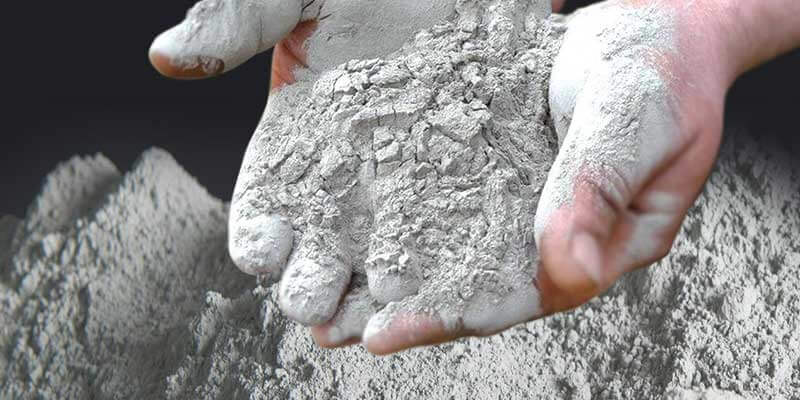
5. Rapid Hardening Cement (RHC)
Rapid hardening cement contains more tri-calcium silicate than Portland cement and is finer ground, due to which it attains high strength during the early days. The strength of rapid hardening cement at the three days is similar to the 7 days strength of OPC with the same water-cement ratio.
So rapid hardening cement is used in concrete where formworks are required to be removed at an early stage which increases the rate of construction speed, saving formwork costs.
This cement has increased lime content and contains higher c3s content and finer grinding, which gives higher strength development than OPC at an early stage.
Rapid-hardening cement is used in prefabricated concrete construction, road works, etc.
RHC is designed to harden faster than OPC, which can be beneficial in reducing the construction time and improving the strength of concrete. It is composed primarily of clinker, gypsum, and other additives such as calcium chloride, which can accelerate the rate of hardening.
Benefits of Rapid Hardening Cement
- RHC can reduce construction time and improve productivity by setting and hardening faster than OPC.
- It has a high early strength development, which can be beneficial in reducing the risk of damage during construction and improving the long-term durability of concrete.
- RHC can be used in a wide range of construction applications, including roadways, precast concrete products, and high-rise buildings.
- It can produce a more durable and stronger concrete than OPC.
Disadvantages of RHC
- The use of calcium chloride can affect the setting time and early strength development of the cement, which can impact construction schedules.
- RHC can be more expensive than OPC due to the additional processing required to accelerate the rate of hardening.
Applications of Rapid Hardening Cement
- RHC is suitable for use in construction projects where fast-setting and high-strength concrete is required, such as roadways, precast concrete products, and high-rise buildings.
- It can also be used in emergency repair work, such as patching and repairing concrete structures.
Examples of construction projects that use Rapid Hardening Cement
- The Hoover Dam Bypass Bridge in the United States, one of the highest and longest concrete arch bridges in the world, used RHC concrete in its construction.
- The Dubai International Airport, one of the busiest airports in the world, used RHC concrete in the construction of its runways and taxiways.
- The Shard, a 95-story skyscraper in London, used RHC concrete in the construction of its foundation and other critical structures.

6. Fast Setting Cement (FSC)
The Fast-setting cement sets earlier than the rapid-hardening cement. At the same time, the rate of gain of strength is similar to Ordinary Portland Cement. Formworks in both cases of using quick-setting cement and rapid hardening cement can be removed earlier, increasing the construction speed and saving the cost of construction.
Fast-setting cement is used where work is to be completed in a very short period and for concreting in static or running water.
Fast Setting Cement is designed to harden and develop high strength in a short period of time.
It is composed primarily of clinker, gypsum, and other additives, such as calcium chloride or triethanolamine, which can accelerate the rate of hardening.
Benefits of Fast-Setting Cement
- Fast Setting Cement can reduce construction time and improve productivity, as it sets and hardens faster than OPC.
- It has a high early strength development, which can be beneficial in reducing the risk of damage during construction and improving the long-term durability of concrete.
- It can be used in emergency repair work, such as patching and repairing concrete structures.
Disadvantages of Fast-Setting Cement
- Additives such as calcium chloride or triethanolamine can affect the cement’s setting time and early strength development, which can impact construction schedules.
- Fast Setting Cement can be more expensive than OPC, due to the additional processing required to accelerate the rate of hardening.
Applications of Fast-Setting Cement
- Fast Setting Cement is suitable for use in construction projects where fast-setting and high-strength concrete is required, such as roadways, precast concrete products, and high-rise buildings.
- It can also be used in emergency repair work, such as patching and repairing concrete structures.
Examples of construction projects that use Fast Setting Cement
- The Burj Khalifa in Dubai, the tallest building in the world, used Fast Setting Cement in the construction of its foundation and other critical structures.
- The New Wear Crossing Bridge in Sunderland, United Kingdom, used Fast Setting Cement in the construction of its piers.
- The Marmaray Tunnel in Istanbul, Turkey, used Fast Setting Cement in the construction of its concrete lining.
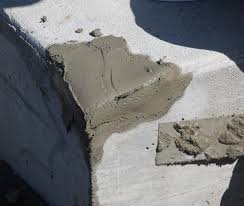
7. High Alumina Cement (HAC)
High alumina cement is a rapid hardening cement with an initial and final setting time of about 3.5 and 5 hours, respectively. So, this cement is commonly used in marine and sewer construction, as well as in refractory applications. High alumina cement is obtained by melting a mixture of bauxite and lime and grinding with the clinker.
The compressive strength of high alumina cement is very high and more workable than ordinary Portland cement and is used in works where concrete is subjected to high temperatures, frost, and acidic action. High alumina cement has a low pH, making it highly chemical resistant, including sulfuric acid.
HAC is composed primarily of calcium aluminate compounds. It is designed to have high early strength and rapid hardening properties, which make it useful in a variety of construction applications.
Benefits of High Alumina Cement
- HAC has a high early strength development, which can be beneficial in reducing the risk of damage during construction and improving the long-term durability of concrete.
- It can set and harden rapidly, which can reduce construction time and improve productivity.
- HAC is highly resistant to chemical attack, making it suitable for use in structures that are exposed to harsh environments, such as chemical plants, refineries, and industrial facilities.
- It has a high compressive strength, which makes it suitable for use in a wide range of construction applications.
Disadvantages of HAC
- HAC can be more expensive than OPC, due to the higher cost of the raw materials and the additional processing required.
- It has a lower resistance to freeze-thaw cycles and can be prone to cracking if exposed to freeze-thaw cycles.
- The high heat generated during hydration can cause the cement to shrink, which can lead to cracking.
Applications of High Alumina Cement
- HAC is suitable for use in construction projects where high early strength and rapid hardening are required, such as precast concrete products, roadways, and bridge decks.
- It is also useful in the construction of structures that are exposed to harsh environments, such as chemical plants, refineries, and industrial facilities.
Examples of construction projects that use High Alumina Cement
- The Channel Tunnel, a rail tunnel connecting the United Kingdom and France, used HAC to construct its concrete lining.
- The Humber Bridge in the United Kingdom, one of the longest suspension bridges in the world, used HAC in the construction of its main piers.
- The Hoover Dam in the United States, one of the world’s largest concrete dams, used HAC to construct its concrete blocks.
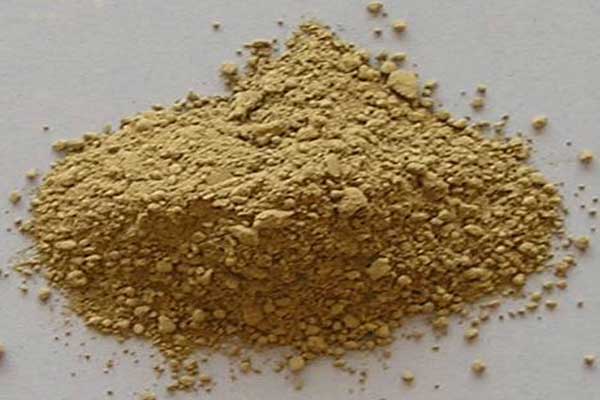
8. Blast Furnace Slag (BFS) Cement
Blast furnace slag cement has almost the same properties as Ordinary Portland cement and it is obtained by grinding the clinkers with about 60% slag. This cement is used for construction works where economic considerations are predominant.
BFS cement is produced by grinding together granulated blast furnace slag and Portland cement clinker. The slag is a byproduct of the iron and steel industry and is produced by the melting of iron ore in a blast furnace.
Benefits of Blast Furnace Slag cement
- BFS cement has a lower heat of hydration than OPC, which reduces the risk of thermal cracking in large concrete structures.
- It has a lower permeability and higher resistance to sulfate attack, making it suitable for use in structures that are exposed to harsh environments.
- BFS cement can improve the durability and long-term performance of concrete by reducing the amount of calcium hydroxide, which can lead to deterioration over time.
- It can reduce the carbon footprint of concrete production, as it uses a byproduct of the iron and steel industry that would otherwise be discarded as waste.
Disadvantages of BFS cement
- BFS cement can be more expensive than OPC, due to the additional processing required to grind the slag and clinker together.
- The quality and consistency of BFS cement can vary depending on the source of the slag, which can impact the performance of the concrete.
- It can have a longer setting time than OPC, which can impact construction schedules.
Applications of Blast Furnace Slag cement
- BFS cement is suitable for use in a wide range of construction applications, including roadways, bridges, and building foundations.
- It can also be used in the construction of dams, tunnels, and other large concrete structures that require a high level of durability and resistance to harsh environments.
Examples of construction projects that use Blast Furnace Slag cement
- The Millau Viaduct in France, one of the tallest and longest cable-stayed bridges in the world, used BFS cement in the construction of its concrete piers.
- The Alvarado Water Treatment Plant in California, one of the largest water treatment plants in the world, used BFS cement in the construction of its concrete tanks and basins.
- The Burj Khalifa in Dubai, the tallest building in the world, used BFS cement in the construction of its foundation and other critical structures.
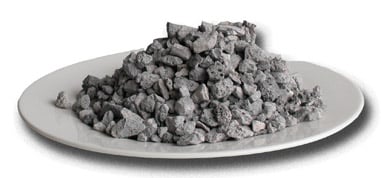
9. Air Entraining Cement
Air-entraining cement is produced by adding indigenous air-entraining agents such as resins, glues, sodium salts of sulfates, etc., during the grinding of clinker to create concrete with billions of tiny air bubbles per cubic foot.
This type of cement is especially suited to improve workability with a smaller water-cement ratio and to improve the frost resistance of concrete. When the water in concrete freezes due to low temperature, it expands. With air-entraining cement, the air voids in concrete provide space for water to expand without cracking the concrete.
Air-entraining cement does not have high strength compared to OPC. It is used in areas where the temperature is very low and where de-icing chemicals are applied. The air bubbles in the concrete up between four and seven percent of the volume of the cement.
Air-entraining cement is designed to introduce a controlled amount of air into concrete during mixing. It is composed primarily of clinker, gypsum, and air-entraining agents such as resins or fatty acids.
Benefits of Air-entraining cement
- Air-entraining cement can improve the workability of concrete, making it easier to place and finish.
- It can increase the durability of concrete by reducing the risk of cracking due to freeze-thaw cycles.
- Air-entraining cement can improve the resistance of concrete to the effects of de-icing salts and other chemicals.
- It can increase the cohesion and bonding of concrete, which can improve its overall strength and durability.
Disadvantages of Air-entraining cement
- Air-entraining cement can be more expensive than OPC, due to the additional processing required to introduce air into the mix.
- The use of air-entraining agents can reduce the strength of the concrete, particularly in the early stages of curing.
- The amount of air introduced into the mix must be carefully controlled to avoid creating excessive porosity, which can reduce the strength and durability of the concrete.
Applications of Air-entraining cement
- Air-entraining cement is suitable for use in construction projects where durability and resistance to freeze-thaw cycles and de-icing salts are required, such as roadways, bridges, and airport runways.
- It can also be used in the construction of concrete blocks, pipes, and precast products.
Examples of construction projects that use Air-entraining cement
- The Tappan Zee Bridge in New York, one of the largest and most complex bridge replacement projects in the United States, used Air-entraining cement in the construction of its concrete piers and abutments.
- The Denver International Airport in Colorado, one of the largest airports in the world, used Air-entraining cement in the construction of its runways and taxiways.
- The Hoover Dam Bypass Bridge in the United States, one of the highest and longest concrete arch bridges in the world, used Air-entraining cement in the construction of its piers and other critical structures.

10. White Cement
White cement is a type of ordinary Portland cement distinguished by its white color. It is composed primarily of clinker, gypsum, and small amounts of additives such as iron oxide or titanium dioxide, which give it its characteristic color.
It is costlier and is used for architectural purposes such as precast curtain walls and facing panels, terrazzo surfaces, etc., and for interior and exterior decorative work like external renderings of buildings, facing slabs, floorings, ornamental concrete products, paths of gardens, swimming pools, etc.
White cement is prepared from raw materials free from Iron oxide.
Benefits of White Cement
- White cement has a high degree of whiteness, which makes it useful in applications where a high level of aesthetic appeal is required, such as architectural concrete, decorative concrete, and masonry.
- It has a high reflectivity and low heat absorption, which can reduce the amount of energy required for cooling in hot climates.
- White cement can be used as a base for the addition of pigments to create a wide range of colors.
Disadvantages of White Cement
- White cement can be more expensive than OPC, due to the additional processing required to produce a high level of whiteness and color stability.
- The use of additives such as iron oxide or titanium dioxide can affect the setting time and early strength development of the cement, which can impact construction schedules.
Applications of White Cement
- White cement is suitable for use in a wide range of construction applications, including architectural concrete, decorative concrete, and masonry.
- It can also be used in the production of precast concrete products, such as tiles, countertops, and statues.
Examples of construction projects that use White Cement
- The Petronas Towers in Kuala Lumpur, Malaysia, one of the tallest twin towers in the world, used White Cement in the construction of its decorative elements.
- The Al Muntazah Park in Doha, Qatar, a public park that features a range of water features, sculptures, and other decorative elements, used White Cement in the construction of its concrete structures.
- The Taj Mahal in India, one of the most famous landmarks in the world, used White Cement in the construction of its marble-like façade.
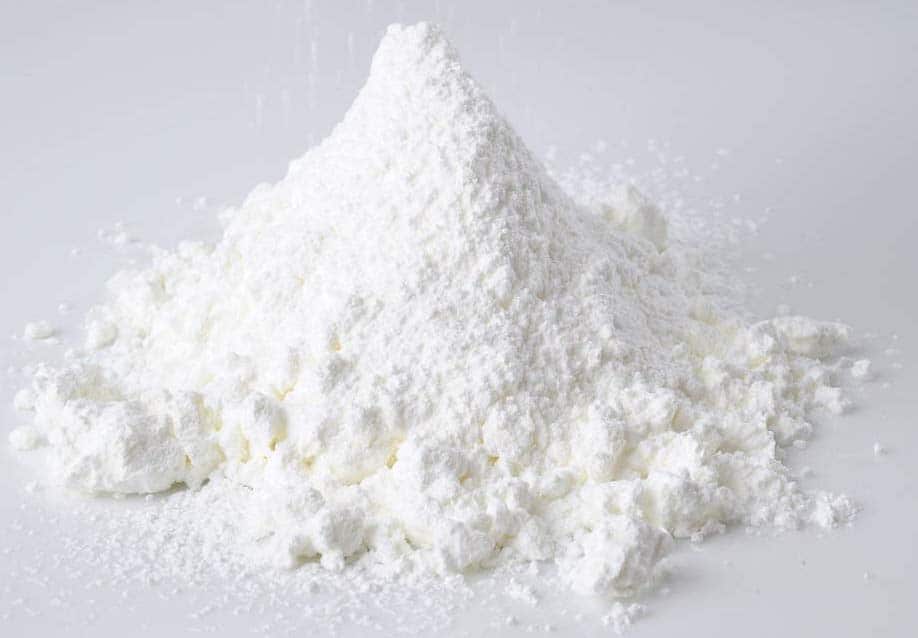
11. Expansive Cement
As the name suggests, the expansive cement does not shrink during or after hardening and expands slightly with time. It generally consists of Portland cement clinker with added calcium sulfate, and sometimes tricalcium aluminate.
Expansive cement is mainly used for grouting anchor bolts and prestressed concrete ducts. This type of cement is used to help overcome shrinkage loss and is often an essential part of sealing joints when used as expansion joint cement.
Expansive Cement undergoes a large volume change during the setting and hardening process, resulting in an increase in the size of the concrete mass. It is composed primarily of Portland cement, limestone, and an expansive agent such as calcium sulfate or magnesium oxide.
Benefits of Expansive Cement
- Expansive Cement can compensate for shrinkage that occurs during the curing process, which can reduce the risk of cracking and improve the durability of concrete.
- It can be used to fill gaps and voids in concrete structures, which can improve their structural integrity and resistance to water penetration.
- Expansive Cement can improve the bonding between concrete and reinforcement, which can improve the overall strength and durability of the structure.
Disadvantages of Expansive Cement
- Expansive Cement can be more expensive than OPC due to the additional processing required to introduce the expansive agent.
- The amount of expansion can be difficult to control, which can result in unpredictable changes in the size and shape of the concrete mass.
- The expansive agent can affect the setting time and early strength development of the cement, which can impact construction schedules.
Applications of Expansive Cement
- Expansive Cement is suitable for use in a wide range of construction applications, including concrete repairs, grouting, and post-tensioning.
- It can also be used in the construction of concrete structures that are exposed to large temperature changes, such as bridge decks and airport runways.
Examples of construction projects that use Expansive Cement
- The Tsing Ma Bridge in Hong Kong, one of the longest suspension bridges in the world, used Expansive Cement in the construction of its concrete anchorages and pylons.
- The Boston Central Artery/Tunnel Project, one of the largest and most complex infrastructure projects in the United States, used Expansive Cement in the construction of its concrete segments and post-tensioning systems.
- The Burj Khalifa in Dubai, the tallest building in the world, used Expansive Cement in the construction of its foundation and other critical structures.
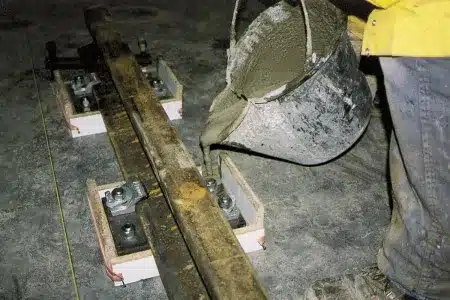
12. Hydrophobic Cement
Hydrophobic Cement is a type of cement that is designed to repel water and resist the penetration of moisture. This cement, also called hydraulic cement, is prepared by mixing water-repelling chemicals and has high workability and strength. It is composed primarily of Portland cement, silica fume, and hydrophobic agents such as stearic acid or oleic acid.
It has the property of repelling water and is unaffected during monsoons or rains. They are impervious to water and sets quickly; thus, they are used for underwater construction and for waterproofing works.
Hydrophobic cement is mainly used for the construction of water structures such as dams, water tanks, spillways, water retaining structures, etc. This cement has high strength and is corrosion and rust-resistant. Hydraulic cement does not do well in colder temperatures.
Benefits of Hydrophobic Cement
- Hydrophobic Cement can improve the durability of concrete by reducing the risk of water penetration, which can cause corrosion of reinforcement and deterioration of the concrete.
- It can improve the resistance of concrete to freeze-thaw cycles, de-icing salts, and other chemicals.
- Hydrophobic Cement can reduce the porosity and permeability of concrete, which can improve its strength, durability, and resistance to abrasion.
Disadvantages of Hydrophobic Cement
- Hydrophobic Cement can be more expensive than OPC, due to the additional processing required to introduce the hydrophobic agents.
- The use of hydrophobic agents can affect the setting time and early strength development of the cement, which can impact construction schedules.
- The hydrophobic properties can reduce the adhesion between concrete and reinforcement, which can affect the overall strength and durability of the structure.
Applications of Hydrophobic Cement
- Hydrophobic Cement is suitable for use in a wide range of construction applications, including bridges, tunnels, and underground structures.
- It can also be used in the construction of buildings and structures that are exposed to high levels of moisture or water, such as swimming pools and dams.
Examples of construction projects that use Hydrophobic Cement
- The Lefortovo Tunnel in Moscow, Russia, a critical transportation artery that connects the city center to the eastern suburbs, used Hydrophobic Cement in the construction of its concrete lining.
- The Maunsell Sea Forts, a group of abandoned sea forts off the coast of the United Kingdom, used Hydrophobic Cement in the construction of their concrete structures to resist the effects of wave action and saltwater exposure.
- The Hoover Dam in the United States, one of the world’s largest and most iconic dams, used Hydrophobic Cement in constructing its spillways and intake towers to resist the effects of water penetration and corrosion.
